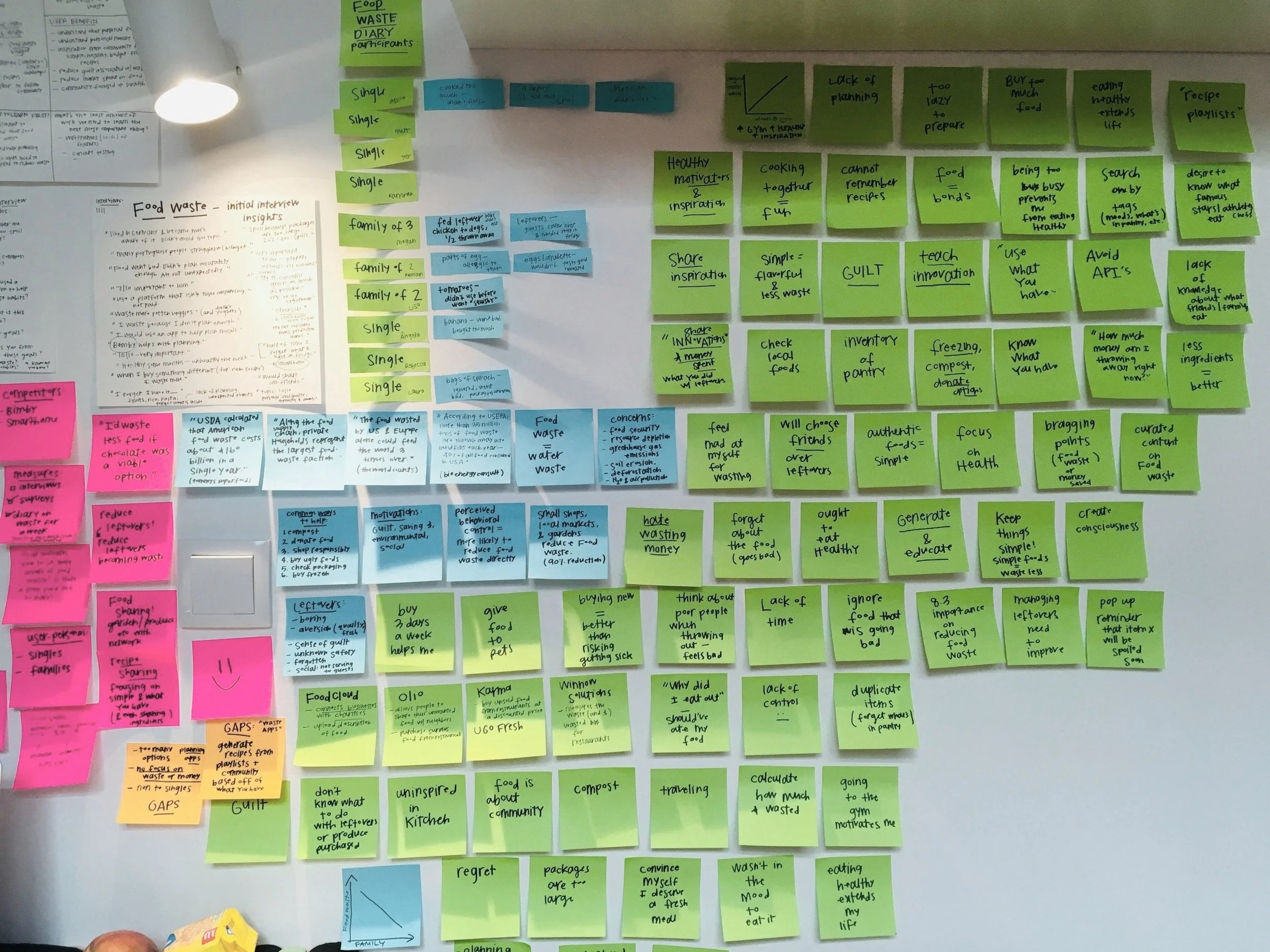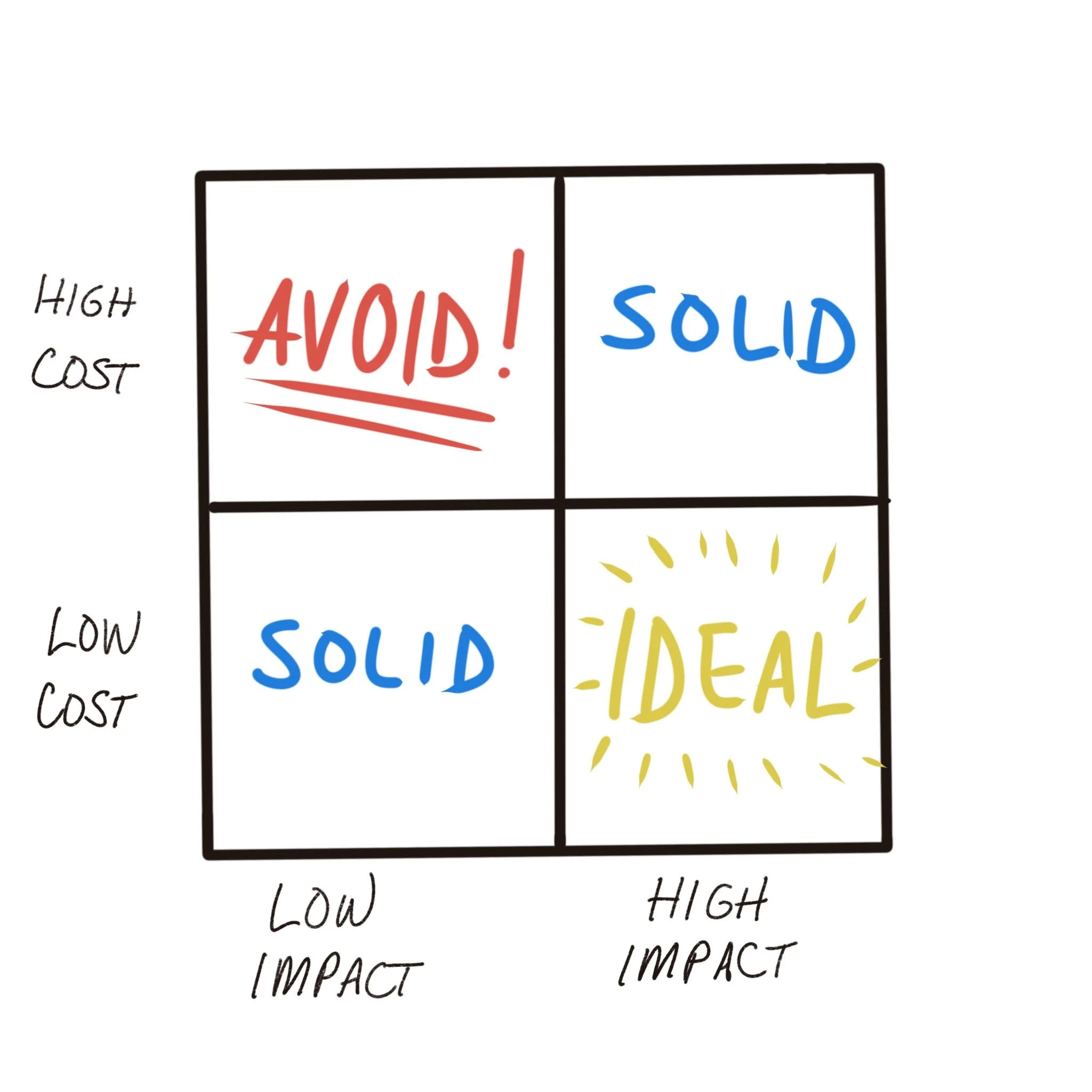14 Keys to a Good Group Brainstorm
How to find the ideas that grow your business
Brainstorms are often messy affairs, with one or two people dominating the room and no one leaving with a clear idea of what needs to get done and why. An organized approach can be useful in getting the most, best quality ideas from your team.
At Jetblack, we love a good brainstorm. We also love a good checklist. Come to think of it, we also love the concept of open source material. So we figured we’d share how we do what we do - in case you wanted to try our process on your own or take a peek behind the curtain.
The process is only half of the secret sauce, with the talent and experiences of the people participating in it (both client and Jetblack folks) being the other half.
We don’t think it’s magic or anything. It’s just some steps in order. And you can find information on brainstorming anywhere. In fact, that are so many creativity resources available on the internet that it will make your head spin.
What makes our process useful is that we’ve used it. We built it and adjusted using information we find from using it. We continue to adjust it and learn from each session, and we’d be glad to conduct a brainstorm with you and your team to test it out further.
Below are Jetblack Creative’s 14 keys to a good group brainstorm
1. Set a clear target 🎯
Before you can conduct an effective brainstorm, it is important to know what outcome you are trying to achieve or what problem you are trying to solve. We’re all for unrestricted, blue-sky thinking when it comes to solutions, but those creative solutions have to solve an actual problem.
2. Define the limiting factors 🤏
What is holding you back from solving this problem at the present moment? Is it time, resources, ideas? Defining what is keeping you from being effective is the first step to becoming effective.
3. Suspend reality (temporarily) 👽
In brainstorming, we like to operate “as if we had our druthers.” What we mean is we want to come up with ideas as if we had infinite time, infinite money, and infinite resources. Essentially, we come up with what would be the ideal/perfect solution and then walk it backward to reality and achievability later (see step 11).
4. Start individually 1️⃣
Start on your own in advance of a group brainstorm. See what comes out when you are not influenced by the ideas of others. Additionally, initial idea generation during group brainstorms can be less efficient because only one person can be talking or sharing at a given moment, leading the extra people in the room to be somewhat wasting their time.
5. Share and compile ideas in advance 🧑🤝🧑
Set up an area such as a Miro board or a Google Doc where participants can share their ideas with the group in advance. This way, everyone is coming to the meeting with the same information.
6. Arrive prepared 📋
Read the ideas that the group came up with in advance. Come up with your own notes and thoughts regarding each, or use them as springboards for further thinking.
7. Warm up 🖇️
At the start of the session, conduct a quick game or two to get the juices flowing. One option is “the paper clip game” where each person in the group thinks of as many uses for a paper clip as possible in three minutes. Or you could come up with ideas for funny new mascots for professional sports teams. Just like a pitcher doesn’t show up and throw 98 mph fastballs without some soft toss, you should do a few warm ups as well.
8. Reiterate the objective 🎯
As a group, remind yourselves of what you’re trying to achieve. Sometimes people can get so excited (a good thing) that they start diving into ideas without first providing context (a less good thing).
9. Discuss, augment, and adjust the ideas 🗣️
Take time to chew on ideas and see what the group can do to stretch them, change them, or even (god forbid) agree on them. Come up with variations on a theme, taking one idea that has potential and seeing all the different ways you could change or apply it. This is where you find out if the material you have come up with has potential.
10. Trim the list and identify top solutions ✂️
Conduct a vote or decision method of your choice to get the list down to a manageable number of ideas that you may want to put into motion, say 3 - 5. Save the rest for another day.
11. Adjust the ideas to be economically or logistically feasible 🔧
Now that you have your ideal solutions, see what you can do to make them real. Consider the realities of costs, logistics, and resources to see if they still hold water.
We like to use a tool called the cost to impact matrix to sort out where ideas land. For evaluating costs, look outside of just finances. Consider the costs of effort, labor, and opportunity cost in your discussions.
Cost to impact matrix
Using this matrix, you can evaluate where ideas fit and prioritize which would be of highest importance for your business.
12. Discuss and set implementation strategy 💬
Discuss the nitty gritty of who, how, where, and when this idea will be implemented.
13. Save ideas for the future 🪣
Don’t throw out all of this good work! Keep the compiled ideas in a file for when similar problems come up, or in case your first few choice ideas don’t work. You don’t know where another great idea might be hiding, so don’t throw out your work.
14. Define the next problem 📃
The best time to start on another brainstorm is right at the tail end of the one that you are working on. Define the next problem that you want to solve so that the group can take off and start coming up with ideas on their own.
Moving forward
A good brainstorm can make incredibly positive changes for your business. Aside from solving problems and deciding on new products or services, it can engage your team and make them feel invested in future projects because the were part of the idea process.
If you are interested in having Jetblack Creative conduct a brainstorm for or on behalf of your business, whether for a new product, campaign, marketing tactic, event - please reach out to aaron@jetblack.work.


